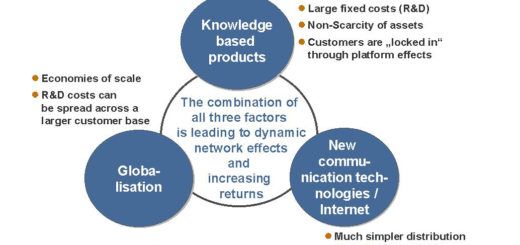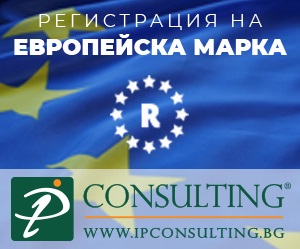Management of Intellectual Property Rights main Principles, Challenges and Objectives
Presented by Eng. VLADIMIR YOSSIFOV,
Consultant, IP Services and Management
Part 2
Identify the assets – Determining what you own
First step for proper management of the IP within a business identification and audit of IP assets.
- You need to know what you have and own, in order to be able to manage the assets.
Principal objective of such IP audit
- to identify and record systematically the IP that a business has developed in-house or acquired, and determine the extent of the business’ ownership of such assets.
Summary of key audit objectives:
- to identify and record existing and hidden IP acquired or developed by the business,
- to determine the origin and legal ownership of the IP identified.
The next step –
to assess the importance and the value to the company or business of the identified IP assets which constitute the broad portfolio of the organization’s intangible assets.
In categorizing and identifying assets, it is useful to group the assets into three or four categories.
Individual intellectual / intangible assets, like copyrights or patents, do not exist in a vacuum. IPRs are always related to know-how, trade secrets or proprietary information – they tend to move in clusters.
A company’s intellectual capital (or assets) could be categorized into three groups:
- marketing group,
- technical group and
- knowledge or skills group of intangibles.
Each has real and verifiable value, and each will vary considerably from company to company.
In some businesses, the marketing group will clearly be dominant while in others, the technical group,
or the knowledge or skills group may carry the weight of value.
Marketing Group of Intangibles
- Corporate name and Logo
- Worldwide trademark registrations, Secondary trademarks
- Copyrights, Label designs, Slogans
- Graphics – design and colours
- Package design and Copyrights
- Marketing umbrella and Brand name
- Sub-brand names and Trade dress
- Consumer advertising, Marketing strategy
- Product warranties,
- Promotion concepts, worldwide Public Relations effort
- Advertising and Graphics review
Technical Group of Intangibles
- Patents, Process technology, Proprietary processes
- Trade secrets, Know-how, Formulae,
- Environmental (green) manufacturing techniques
- Packaging technology and sourcing
- Shapes and sizes,
- Design technology, Technical exchange meetings
- Product consistency/fingerprint, Technical training
- Technology updates, New product technology
- Secondary research, Secret blending techniques
- Technical data sheets, Evaluation data
- Proprietary test results, Clinical tests,
- Test facilities and research
- Plant and production design, Production specifications
Knowledge / Skills Group of Intangibles
- Office management, Mailing lists, Databases
- Processing methods, Exchange of technological ideas
- Purchasing/Procurement procedures, Customer lists, Sales leads, Sales knowledge,
- Quality control standards,
- Customer relations, Customer surveys, Proprietary MIS
- Non-compete clauses, Manuals, Instructions, Codes
- Training on-site, Employee education, Marketing/training,
- Trade relationships, International research clearing center
- Pricing policies, fee structures, Asset management processes
- Regulatory agency filings and approvals
- Security systems processes, Record keeping systems
- Business licenses and characters
Assess the value and importance of the assets
- Once the IP assets of a company have been identified, it is important to assess their value
- for the company and its business operation (current and future)
- for the clients and consumers – how they appreciate / view the company’s intangible assets in relation to its products / service
- for the competitors – are they trying to copy/use the company’s intangible assets
- for potential users of these intangible assets – are they interested in using/acquiring the company’s IPR for their own business development
All aspects should be reflected in the assessment and valuation of the company’s intangibles and on this basis the strategic decision to be made – what to do with these intangible / IPR assets.
- Examples that the process of identifying and using intangible assets effectively can be seen everywhere.
One impressive example is IBM.
In the late 1990s IBM undertook a comprehensive audit of its intellectual property assets to find that many research results were protected by patents or other IPRs, but these were largely underused by the company.
Income from licensing and royalties (generally from technology): around 30-40 Million US$ annually.
Following the IP audit exercise and a subsequent review of internal policies and management practices, IBM’s annual revenue from licenses and royalties jumped in the early 2000s to over 1.7 Billon US$.
Protect the assets
- Assessment and valuation of IP assets will facilitate their protection, and establishing an IP policy of the company
- Not all intangible assets can be protected as IPRs and therefore special provisions have to be made to ensure protection against unsolicited disclosure and illegal use
- Clear procedures should be established for the protectable IPRs (inventions, designs, trademarks, etc.) concerning the different decisions to be taken by management in line with the business objectives and applicable legislation: e.g., invention disclosure procedures, for which IPRs and when to start the procedures, where, in respect of which markets, periodical review of IPR titles and their maintenance, etc.
- Special attention should be given to the protection of trade secrets and know-how. These are very often in the core of the company’s manufacturing and service activities. And leaking trade secrets and proprietary information can result in considerable, even irreparable damages to the core business of the company.
- In this context attention must be given to sensibilization of staff and consultants to keeping secret company’s trade secrets, know-how and proprietary information
- Since IPR protection has costs a clear and long term decision on the protection and use of IPRs should obligatory be accompanied by proper financial commitments
- Medium and long term protection of IPRs and their use (internally or externally (e.g. licensing)) should be subject of periodic reviews and assessment – at least once a year.
Use the assets to create value, gain competitive advantage
- Identified, categorized, valued and protected IP assets are pre condition / sound basis for decisions on how to better exploit IPRs through use and/or commercialization.
- Good IP governance will provide the business with numerous commercial and bottom-line benefits (see Annex II) including improved:
- accountability of resources;
- better operational and financial performance;
- better risk management;
- competitive advantage; and opportunities for growth and strategic investment
- improved earnings per share and share value



